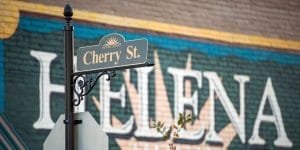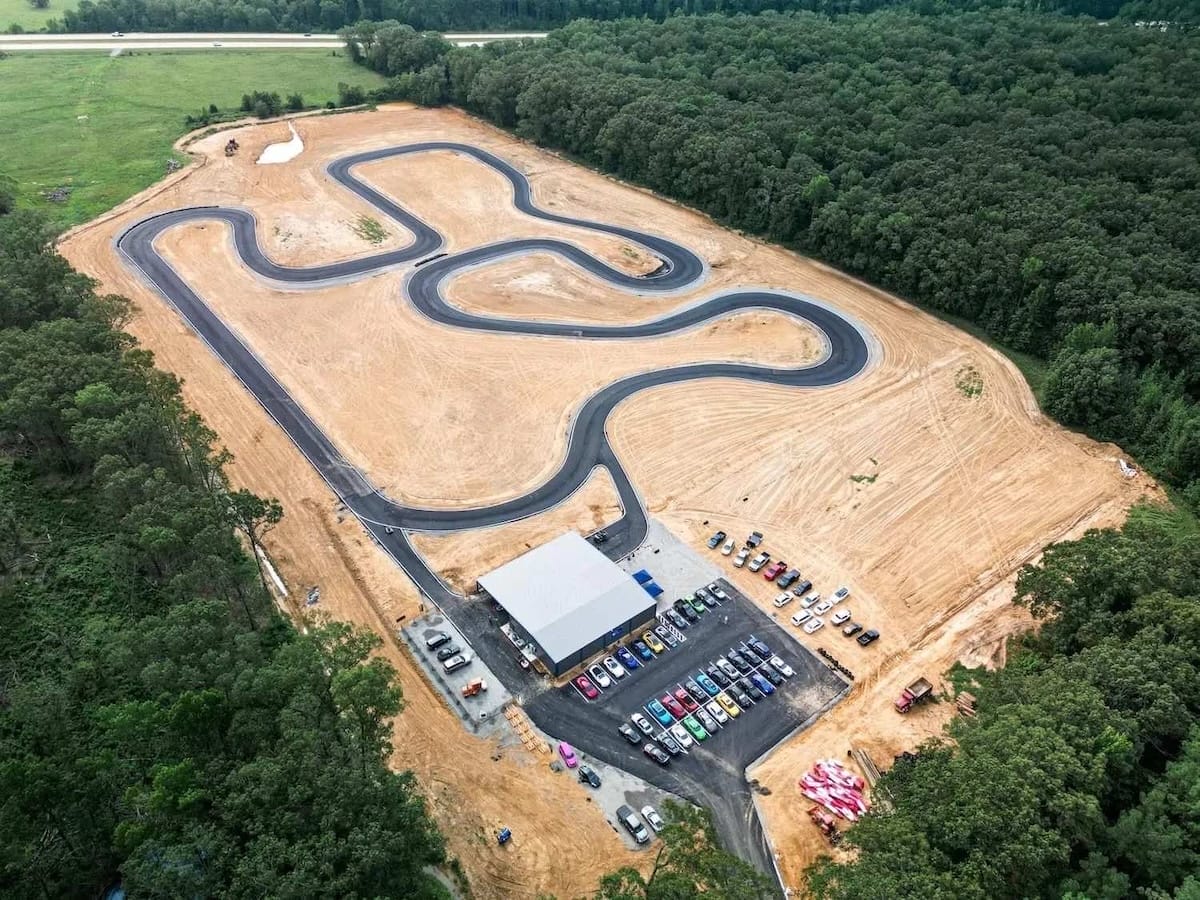

Uh oh...
It appears that you're using a severely outdated version of Safari on Windows. Many features won't work correctly, and functionality can't be guaranteed. Please try viewing this website in Edge, Mozilla, Chrome, or another modern browser. Sorry for any inconvenience this may have caused!
Read More about this safari issue.

In the heart of Lake Village, Arkansas, where history unfolds and the past comes alive, lies the captivating Lakeport Plantation, an Arkansas State University restoration project. Lakeport is the remaining Arkansas plantation home on the Mississippi River where more than 50 once stood, many of them swallowed by the river’s changing course. This magnificent estate, once a thriving cotton plantation, beckons visitors to embark on a journey through time and immerse themselves in the rich tapestry of the region’s heritage.
This spot has always been on my Arkansas bucket list, and when our family traveled to the 30A area for a summer vacation, I realized we would be traveling right by it. Several spots on my summer bucket list were near paths we would be driving, so we added an extra day to the front end of our trip to slow down and explore Arkansas’s delta, full of history and delicious food.
If you are trying to think “where” this is on your trip to the Florida and Alabama beaches, consider the big white cable bridge you take to cross the Mississippi River. The turnoff is just before you take the bridge on the Arkansas side. It is also an official interpretive center along the Great River Road, a drivable path connecting Canada to the Gulf of Mexico.
The sprawling grounds of Lakeport Plantation envelop you with an aura of grandeur and elegance. The stately 1859 antebellum mansion stands tall, its towering columns reaching toward the heavens, a testament to the architectural prowess of a bygone era. Intricate detailing adorns every corner, whispering tales of luxury and prosperity.
Surrounding the mansion are vast fields that once waved with lush cotton crops, a reminder of the plantation’s agricultural roots. These fields bear witness to a storied history but serve today as a landmark for a new generation to continue the legacy of economic development in a path that preserves history and changes her future.
History of Lakeport Plantation
Cotton was first grown in the soil at Lakeport Plantation in 1831 by Joel Johnson, almost 30 years before the construction of the 1859 home visitors tour today.
The Johnson family moved to Arkansas from Scott County, Kentucky. Seeking a frontier way of life in a pioneer region, the Johnsons were cotton farmers looking for fresh soil in undisturbed land. By the 1860s, they’d acquired nearly 200 acres of land producing cotton, corn and vegetable crops. The Johnsons were a political dynasty family originating among the first immigrants to Virginia.
The primary way we change history is to learn about its consequences.”
The Civil War cast a dark shadow over Lakeport Plantation, transforming it into a contested site. In 1862, Union forces led by General Samuel Curtis marched through Arkansas, and hundreds of enslaved people, yearning for freedom, abandoned the plantations and joined the march.
A turning point in the history of slavery in the United States came with the Emancipation Proclamation, issued in 1863. This transformative document declared that all enslaved people in Confederate-held territories would be free. As a result, the number of enslaved people at Lakeport Plantation dwindled from 155 in 1860 to just 24 in 1864, marking a significant shift in the institution of slavery, especially for Arkansas.
Lycurgus Johnson and other plantation owners in the areas suffered immediately following the Civil War, with their main labor pool living as freedmen, primarily because he carried a reputation as a fair and honest employer by the local Freedman’s Bureau notes. He was an “honest man of Chicot County,” working for his staff and honoring them with “fullest justice.”
Sam Epstein and his brother arrived in Lake Village around 1900 as peddlers but soon established businesses along the river, quickly acquiring land around Chicot County. Epstein established a cotton gin and general store, gaining thousands of acres in the area. In the 1920s, the Johnsons sold the home to Sam Epstein, and he used it as a farm manager’s home to oversee production.
The abandoned home sat empty in the 1970s and beyond for over 30 years. In 2001, Epstein’s grandson gave the property to the Arkansas State University system for preservation and to use as a hands-on learning and education facility. Today, the home is in its 1860s family life condition with layout and finishes.
Highlights For Your Tour
- Guided or self-guided options
- The front door to the home is a 12-foot wooden door painted to look like rosewood.
- Thirteen restored fireplaces, including their faux marble finishes.
- An original section of the painted floorcloth greets visitors in the main hall.
- Several original family artifacts are in the home, including a family desk, crib and china.
- 14-foot ceilings and medallions – all reminiscent of “looking” more opulent
- An on-site piano was added to the Johnson’s tax records in 1869
- On-site commissary where they sold supplies during the Civil War to the North and the South
- The original Wallace and Lithgo Co. Kentucky wood-burning stove
- On-site dairy building used for cooling milk, butter and cheese
- The office in the home once served as a doctor’s office
- Magnolia trees around the home are over 150 years old, planted when the home was built
- Second-story access to family quarters
- As the home was restored, many artifacts on display were found in the soil, walls and underboards.
- Advanced technology gutter system collecting water through copper tunnels to the cistern behind the home.
Lakeport Lingers with a New Legacy
Lakeport Plantation has been meticulously restored to its former glory, serving as a living museum that preserves and showcases the region’s rich history.
Beyond its historical significance, Lakeport Plantation offers visitors a tranquil oasis to escape the hustle and bustle of modern life. The sprawling grounds are a feast for the senses, featuring lush gardens, towering trees and serene walking trails. Visitors can stroll through the gardens, marveling at the vibrant blooms and inhaling the heady fragrance of magnolia blossoms.
Our family included an on-site picnic with our visit and listened to the sounds of nature under an old oak tree. We discussed what happened on these grounds and used it as a great learning opportunity for our family. We also discussed the Arkansas Delta region’s agricultural life and planting seasons.
Lakeport Plantation is an excellent stop to couple with a visit to Lake Chicot State Park, Arkansas’s largest natural lake and North America’s largest natural oxbow lake.

Whether you are a history enthusiast, an architecture lover, or someone seeking a glimpse into the past, visiting Lakeport Plantation in Lake Village is an enriching experience that will leave an indelible mark. This historical treasure invites visitors to connect with the region’s heritage, gain a deeper understanding of the struggles and triumphs of the past, and appreciate the beauty and resilience of the human spirit.
Lakeport Plantation
601 Highway 142, Lake Village | Special Directions
Website | Facebook | Instagram
Hours of Operation
Open year-round but closed on Sundays, Independence Day and Labor Day
Guided tours are held at the hour from 9:00 a.m. – 3:00 p.m., or self-guided tours during the same time.
They are closed Saturday and Sunday beginning Sept. 1.
Join the Conversation
Leave a Comment
2 responses to “Lakeport Plantation | A Landmark for Change”
 Leave a Reply
Leave a Reply
We do the work.
You check your email.
Sign up for our weekly e-news.
Get stories sent straight to your inbox!















 Leave a Reply
Leave a Reply
[…] 1898 by Italian immigrants who began their journey in New York and quickly moved to Lake Village as migrant workers in cotton fields. However, after facing harsh conditions and exploitation, the group relocated to Northwest […]
[…] 1898 by Italian immigrants who began their journey in New York and quickly moved to Lake Village as migrant workers in cotton fields. However, after facing harsh conditions and exploitation, the group relocated to Northwest […]